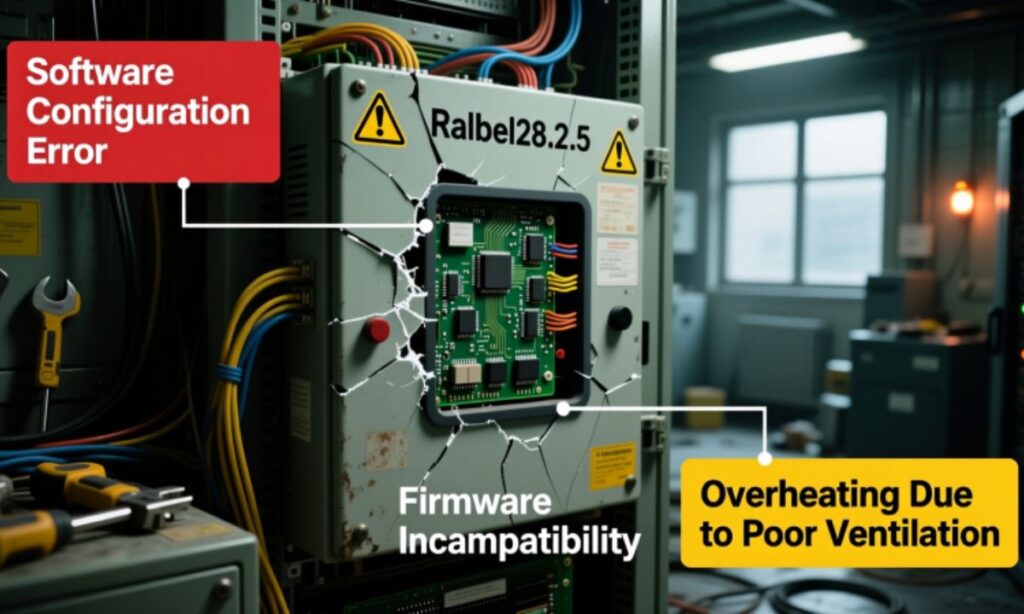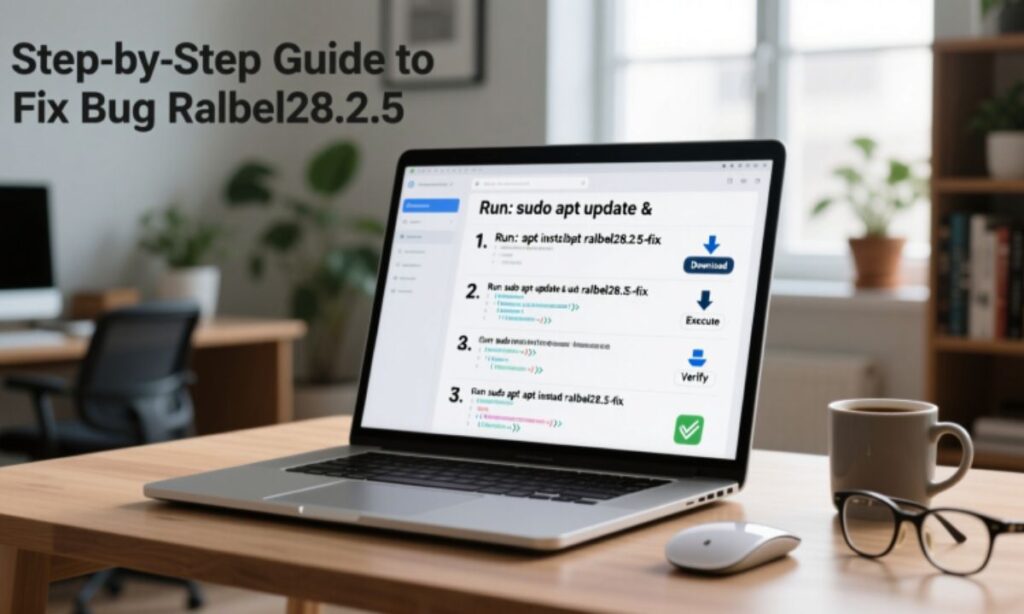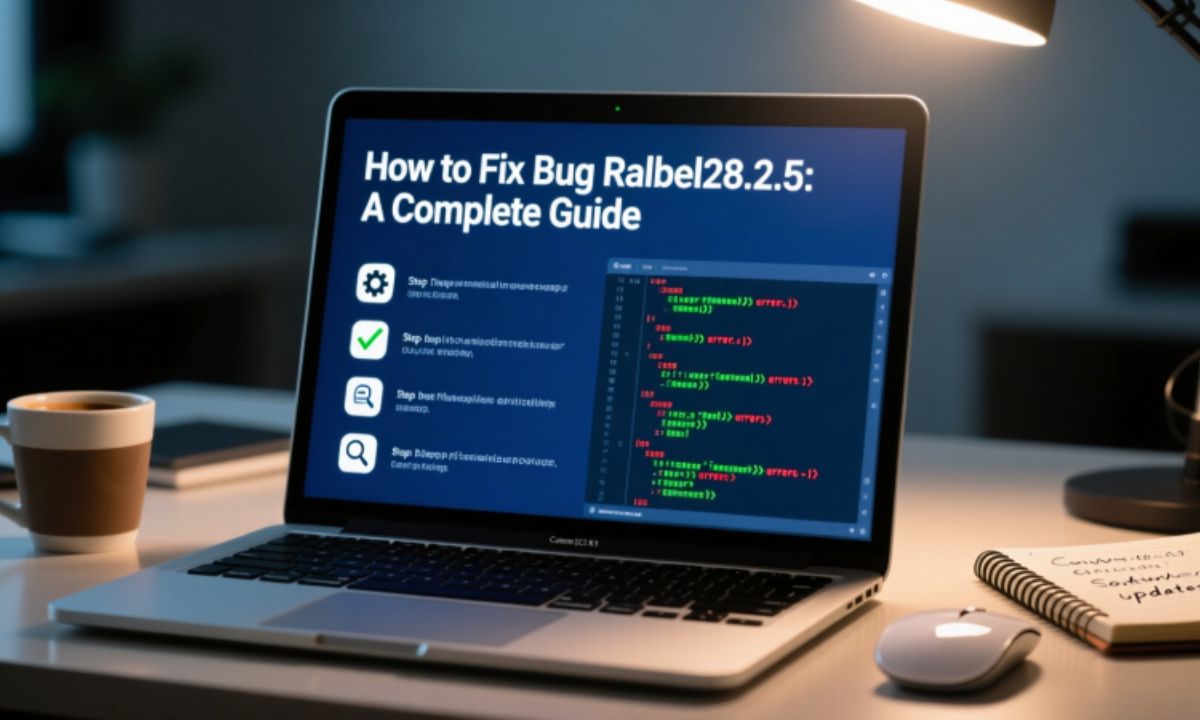How to Fix Bug Ralbel28.2.5: A Complete Guide
Dealing with bug Ralbel28.2.5 can be annoying, especially when it stops your work or crashes your app. This error often shows up because of software conflicts, corrupted files, or wrong settings. But don’t worry most of the time, it can be fixed with simple steps. Knowing what causes it is the first step toward solving it.
In this guide, we’ll explain easy methods to fix bug Ralbel28.2.5 step by step. You’ll learn how to check system settings, clear cache, and reinstall programs safely. We’ll also share a few advanced tips to prevent this problem from returning. By the end, your system will run smoother and more stable.
Understanding Bug Ralbel28.2.5: Complete Troubleshooting Guide
Bug Ralbel28.2.5 is a persistent software error that affects various applications and systems. This error code appears when critical system components fail to communicate properly. Users experiencing this issue often face application crashes, installation failures, and unexpected system behavior.
The Ralbel28.2.5 error disrupts normal workflow and productivity. This troubleshooting guide provides comprehensive solutions to resolve the problem. Understanding the root cause helps prevent future occurrences and maintains system stability.
Technical analysis reveals that this bug stems from multiple sources. Corrupted files, dependency conflicts, and configuration errors are primary triggers. Proper error resolution requires systematic diagnosis and targeted fixes.
Common Causes Behind Ralbel28.2.5

Software compatibility issues frequently trigger this error. When applications run on incompatible operating system versions, conflicts emerge. Outdated versions of software lack necessary patches and security updates. The version mismatch creates instability across system processes.
Dependency management failures cause significant problems. Applications require specific libraries and frameworks to function correctly. Missing libraries prevent proper initialization and lead to runtime errors. When environment variables are misconfigured, applications cannot locate required resources.
Registry issues and corrupted system files contribute to this bug. The Windows registry stores critical configuration data. Damaged registry entries disrupt application behavior. Temporary files accumulation clogs system resources and triggers errors.
| Cause Category | Impact Level | Common Symptoms |
| Corrupted Files | High | Application crash, data loss |
| Dependency Conflict | Medium | Installation failure, startup errors |
| Configuration Error | Medium | Feature malfunction, performance issues |
| Outdated Version | Low | Security vulnerabilities, compatibility problems |
Third-party software conflicts create additional complications. Antivirus programs and firewall blocking mechanisms interfere with legitimate processes. Background processes consume resources and cause performance issues. Identifying conflicting programs requires careful log analysis and testing.
Step-by-Step Guide to Fix Bug Ralbel28.2.5

Step 1: Restart and Clear Temporary Files
System restart resolves many temporary glitches. Close all running applications before rebooting. This process clears RAM and resets system states. Temporary file accumulation causes cache problems that affect performance.
Clear cache and temporary data using built-in tools. Navigate to Disk Cleanup utility on Windows. Delete temporary internet files, system error memory dumps, and thumbnail cache. This periodic cleanup improves system optimization and frees valuable storage space.
Step 2: Verify Software Updates
Check for available software updates immediately. Developers release patches to address known bugs and vulnerabilities. Update failure often occurs due to interrupted downloads or insufficient permissions. Use official vendor support channels for authentic updates.
OS patches improve system stability and security. Enable automatic updates for critical applications. Manual updates ensure you install the correct version. Verify update logs to confirm successful installation.
Step 3: Check Dependencies
Examine all required dependencies thoroughly. Applications need specific runtime libraries and frameworks. Missing components trigger initialization failures. Use diagnostic tools to identify absent dependencies.
Dependency conflict occurs when multiple versions coexist. Remove older versions before installing new ones. Environment variables must point to correct library paths. Verify PATH settings in system configuration.
Step 4: Disable Conflicting Programs
Third-party software frequently causes conflicts. Temporarily disable antivirus programs to test compatibility. Firewall rules might block necessary connections. Add exceptions for trusted applications in security settings.
Background processes consume system resources unnecessarily. Use Task Manager to identify resource-heavy programs. Close non-essential applications during troubleshooting. Safe mode boot helps isolate problematic software.
Step 5: Reconfigure Settings
Application settings corruption causes persistent errors. Reset configurations to default values. Navigate to application preferences or settings menu. Export current settings as data backup before making changes.
Configuration reset eliminates problematic customizations. Recreate user profiles if issues persist. Check compatibility mode settings for older applications. Adjust system permissions to grant necessary access.
Step 6: Perform a Clean Reinstall
Clean reinstall removes all traces of corrupted installations. Uninstall the application using Control Panel or Settings. Delete remaining folders and registry entries manually. Use specialized uninstaller tools for complete removal.
Reinstall application from official sources only. Download the latest version from vendor website. Avoid third-party download sites that distribute modified files. Follow installation wizard carefully and select appropriate options.
Advanced Troubleshooting Techniques
System restore reverts configurations to previous working states. Create restore points before major changes. This safety net allows quick recovery from failed updates. Access System Restore through Control Panel or Recovery Options.
Log analysis provides detailed error information. Check Event Viewer for system and application logs. Error messages contain valuable debugging clues. Search error codes in official documentation for specific solutions.
Compatibility mode runs programs designed for older operating systems. Right-click application executable and select Properties. Enable compatibility settings for previous Windows versions. Test different compatibility configurations systematically.
Registry editing requires extreme caution. Incorrect modifications damage system integrity. Create registry backup before making changes. Use Registry Editor only when following verified instructions.
| Technique | Difficulty | Success Rate | Risk Level |
| System Restore | Easy | 75% | Low |
| Registry Edit | Advanced | 85% | High |
| Compatibility Mode | Medium | 70% | Low |
| Log Analysis | Medium | 80% | None |
Best Practices to Prevent Future Errors

Software maintenance prevents most common errors. Schedule regular updates for all applications. Enable automatic updates where possible. Monitor vendor announcements for critical patches and security bulletins.
Data backup protects against catastrophic failures. Create multiple backup copies on different media. Use cloud storage and external drives for redundancy. Test restore procedures periodically to ensure backup integrity.
System optimization maintains peak performance. Run disk cleanup utilities monthly. Defragment hard drives on traditional HDD systems. SSD drives require different maintenance approaches and TRIM support.
- Install applications from official sources only
- Maintain adequate free disk space (minimum 20%)
- Monitor system resources regularly
- Update device drivers consistently
- Avoid installing unnecessary programs
- Use antivirus software from reputable vendors
- Document configuration changes for reference
Proactive monitoring identifies problems early. Use diagnostic tools to check system health. Monitor performance metrics like CPU usage, RAM consumption, and disk activity. Address warning signs before they escalate into critical failures.
Frequently Asked Questions
What causes Bug Ralbel28.2.5 to appear suddenly?
Corrupted files, failed updates, or dependency conflicts trigger sudden error appearances. Software incompatibility after system changes also causes this issue.
Can antivirus software cause this error?
Yes, overly aggressive antivirus programs may block legitimate processes. Temporarily disable security software to test if it causes conflicts.
Is it safe to edit the registry to fix this bug?
Registry editing carries significant risks. Always create backups first and follow verified instructions from official sources only.
How long does a clean reinstall take?
Clean reinstall typically requires 15-30 minutes depending on application size and system speed. Allow extra time for configuration and data restoration.
Will fixing this bug delete my data?
Most troubleshooting steps preserve user data. However, clean reinstall may require backup creation. Always protect important files before major changes.
Conclusion
Bug Ralbel28.2.5 presents significant challenges but remains solvable through systematic troubleshooting. Understanding common causes enables targeted error resolution. Following the step-by-step guide addresses most instances effectively.
Prevention proves more effective than reactive fixes. Implement best practices for software maintenance and system optimization. Regular updates, periodic cleanup, and data backups minimize future risks. Stay proactive with system monitoring and address warning signs promptly for optimal system performance and stability.







